RARE! 1945 WWII D-Day Operation Iceberg 10th Army Okinawa Kadena Airfield Soldier Marked Advancement Map - Marked CONFIDENTIAL
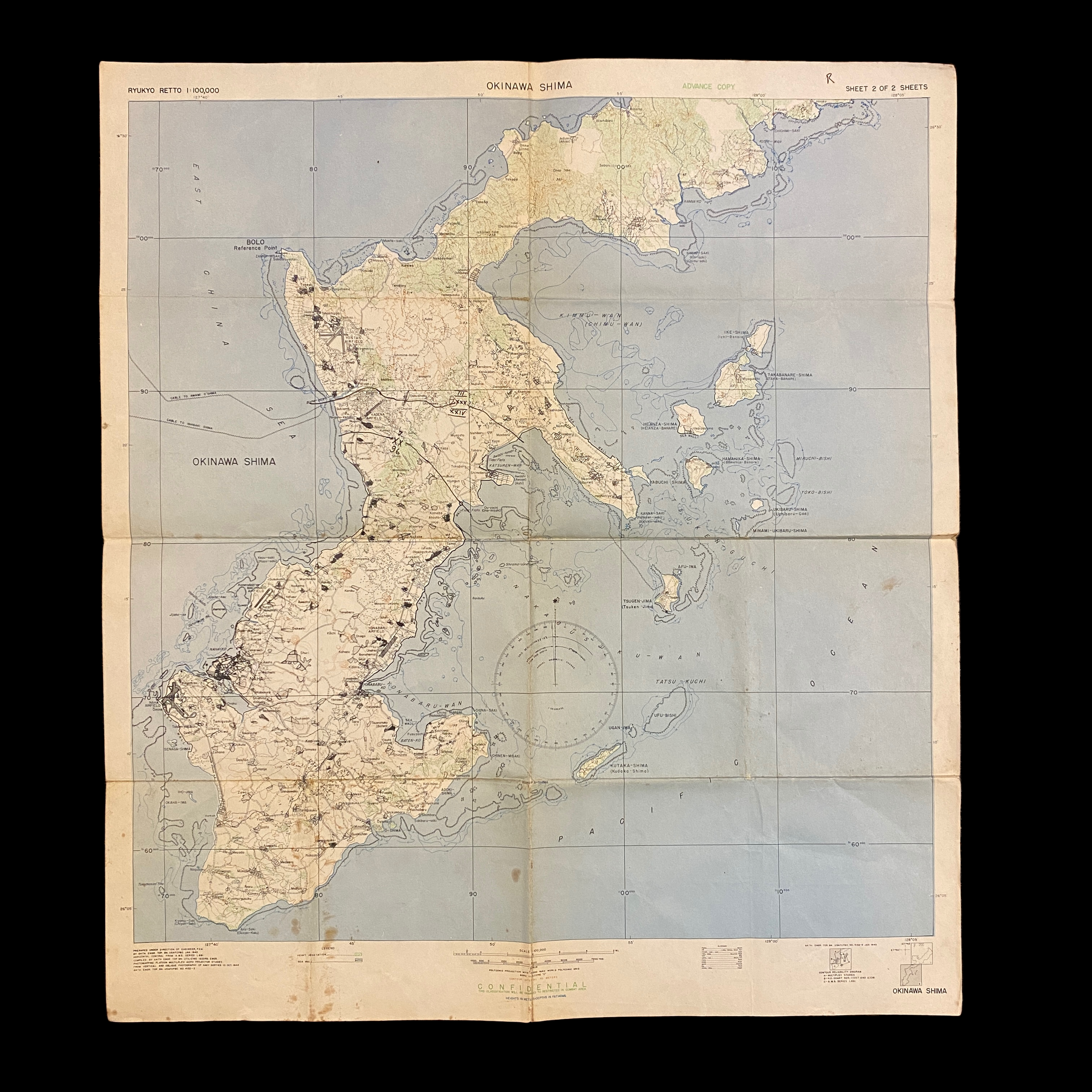
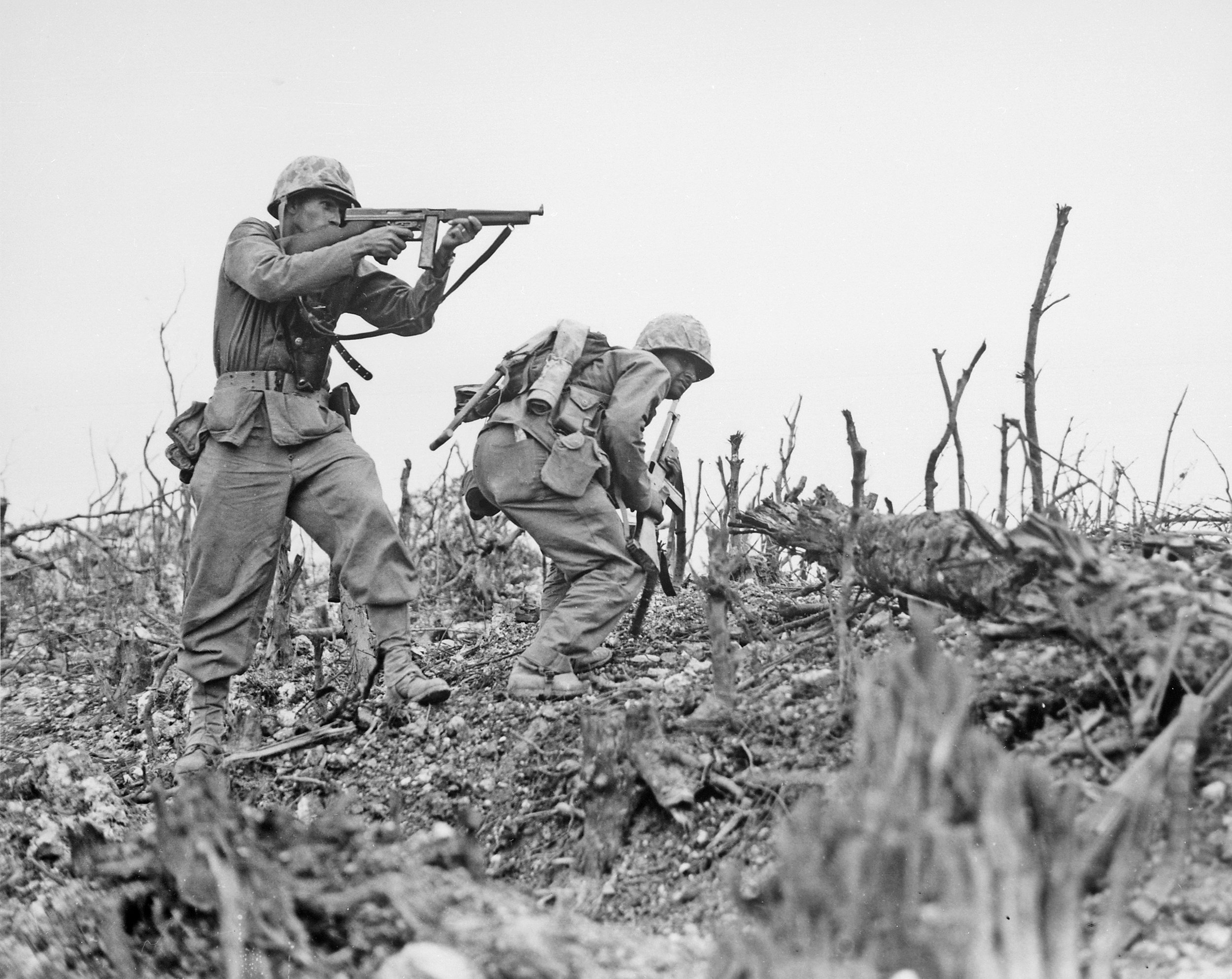
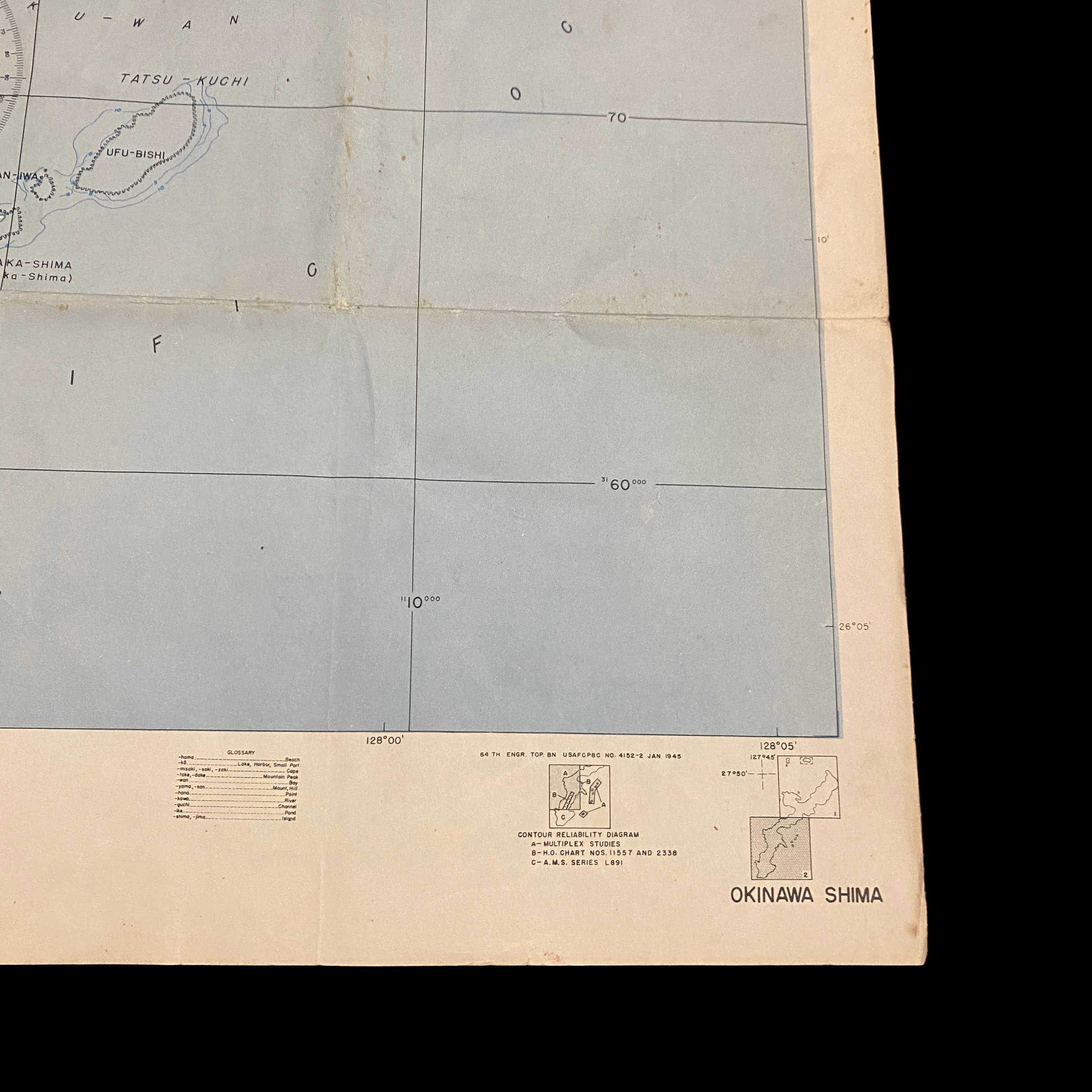
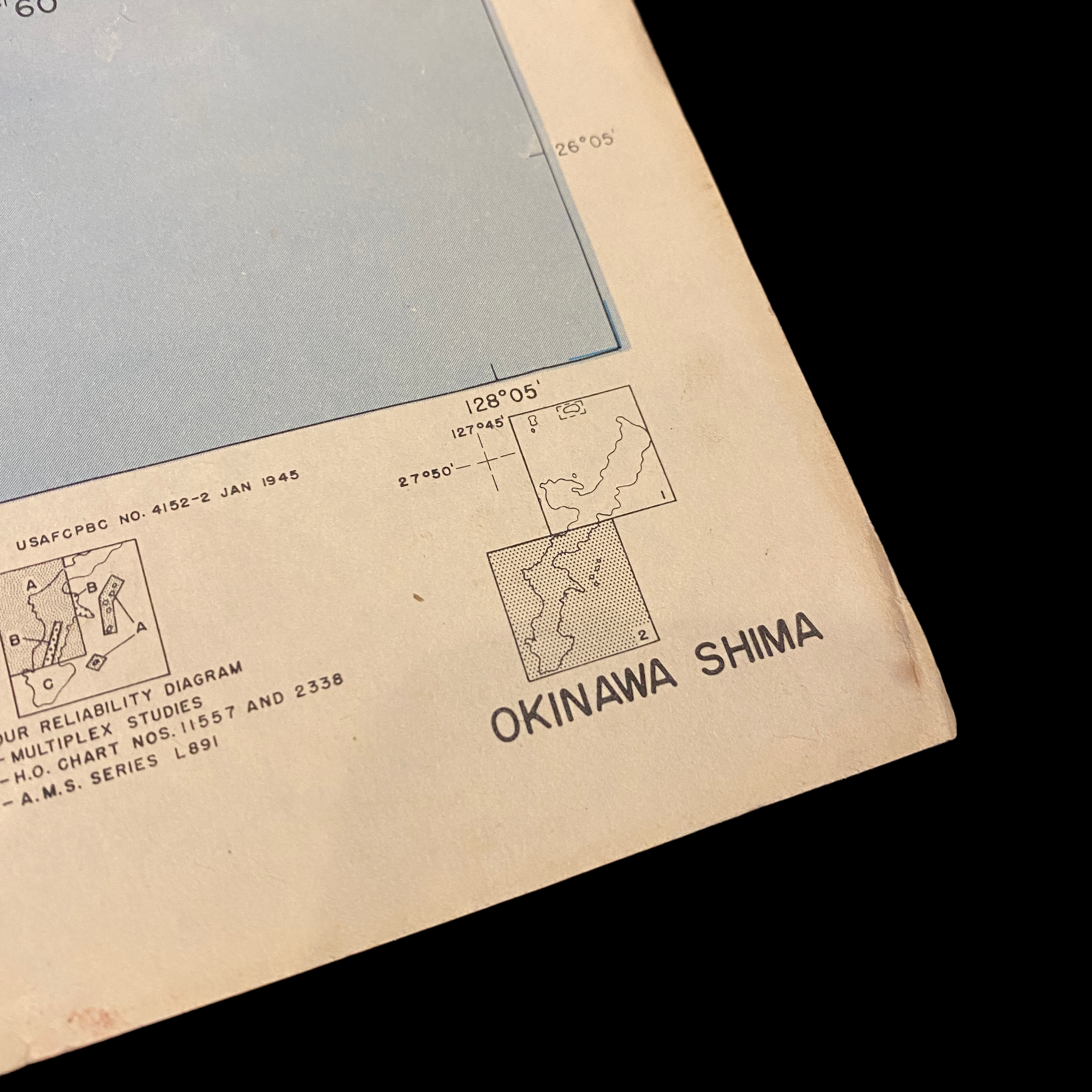
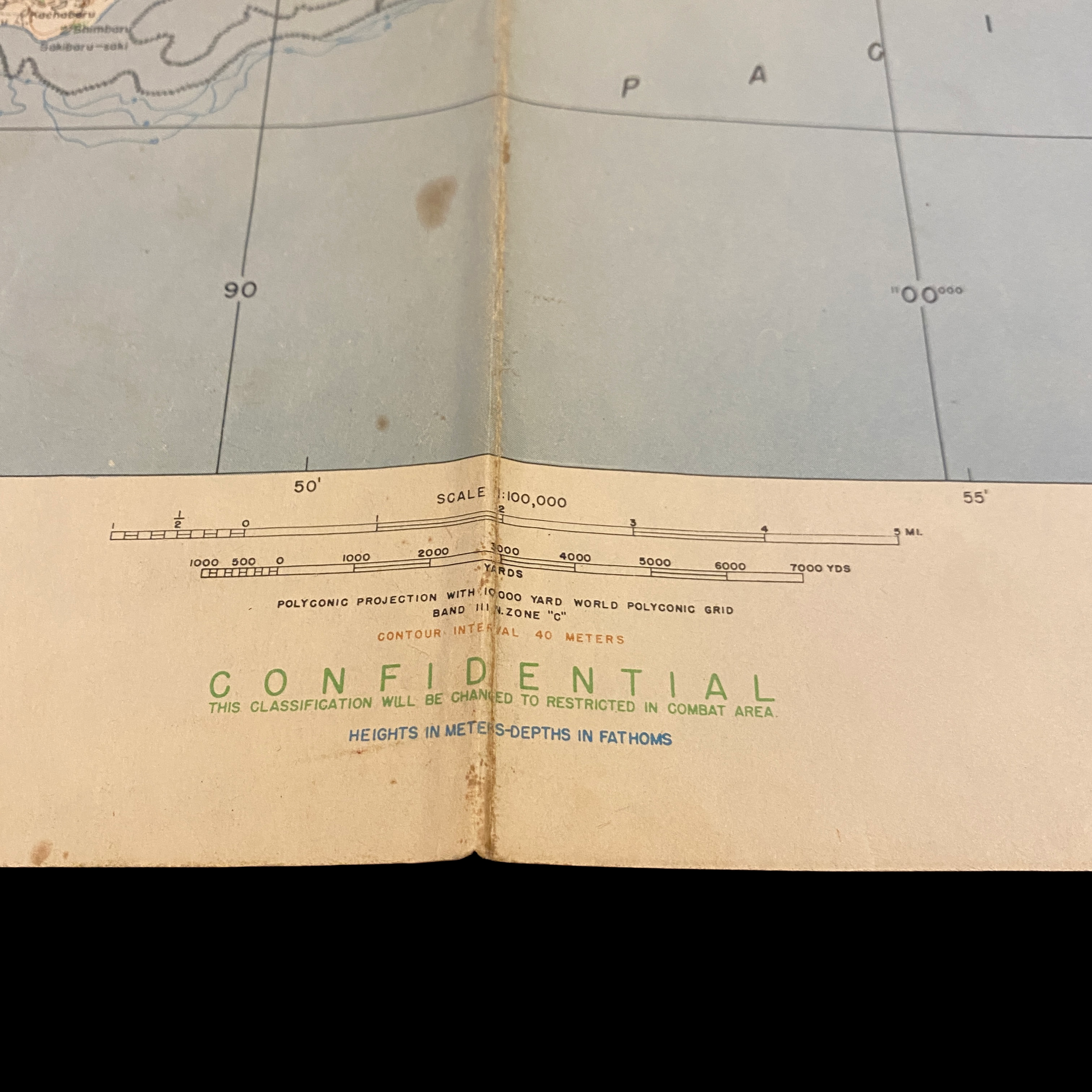
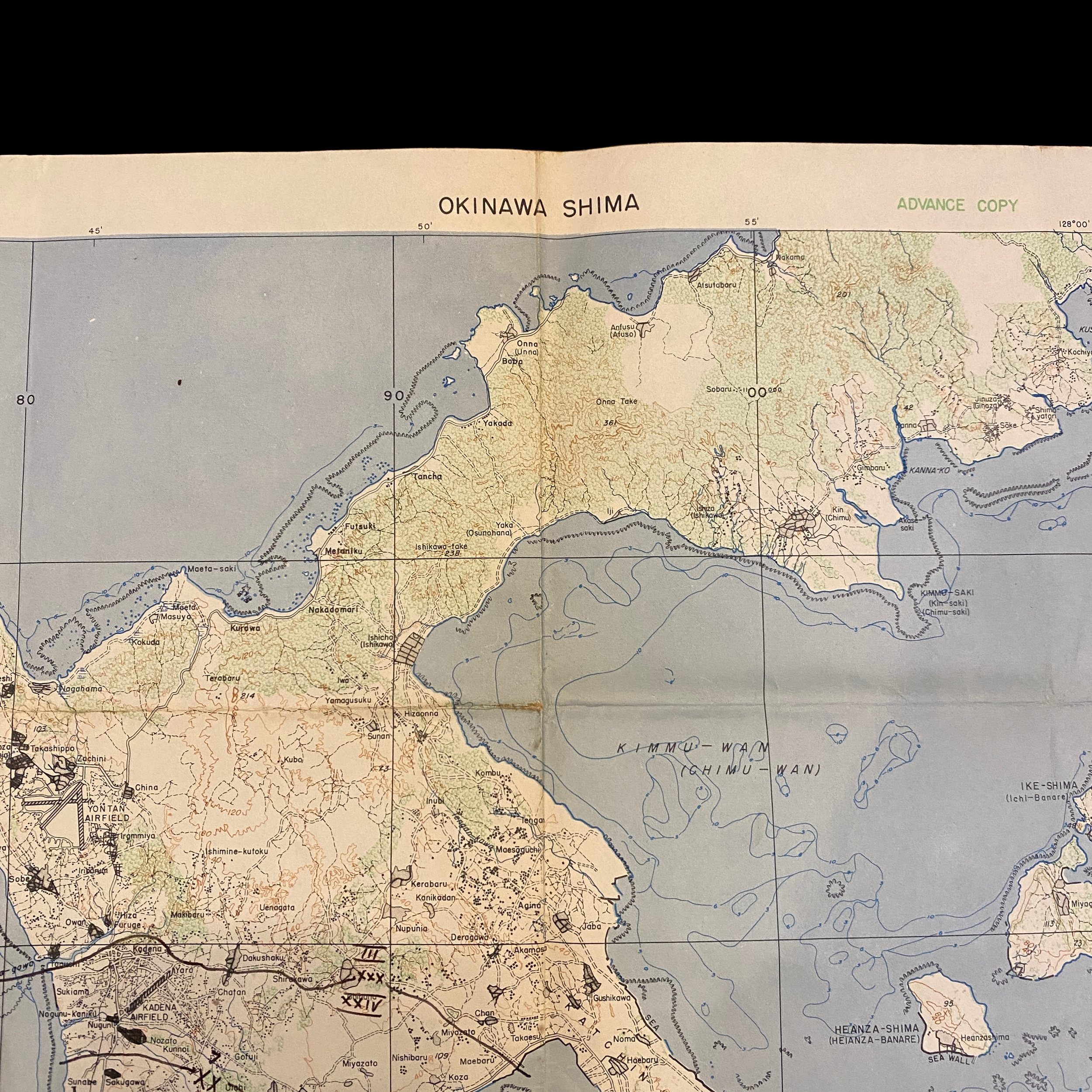




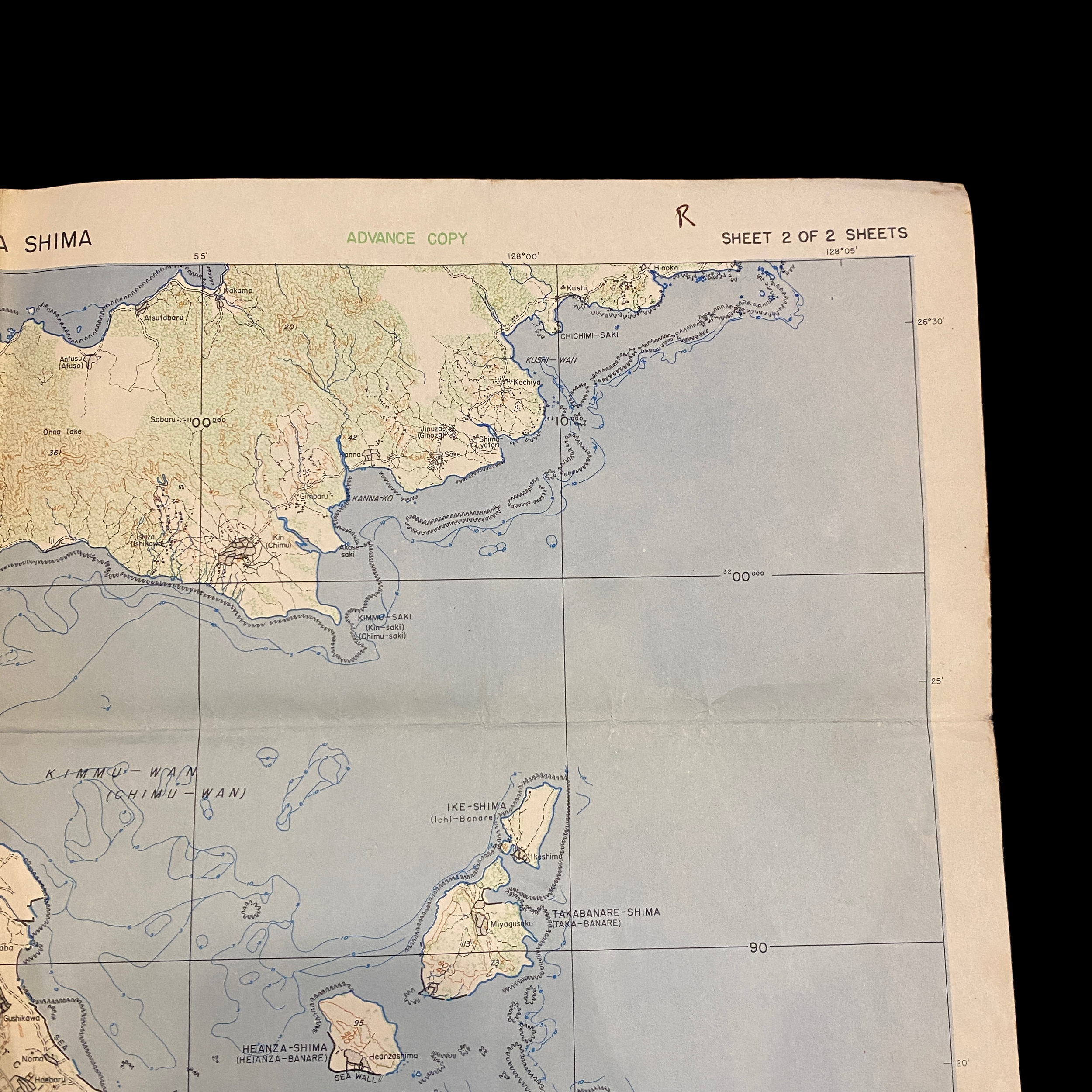
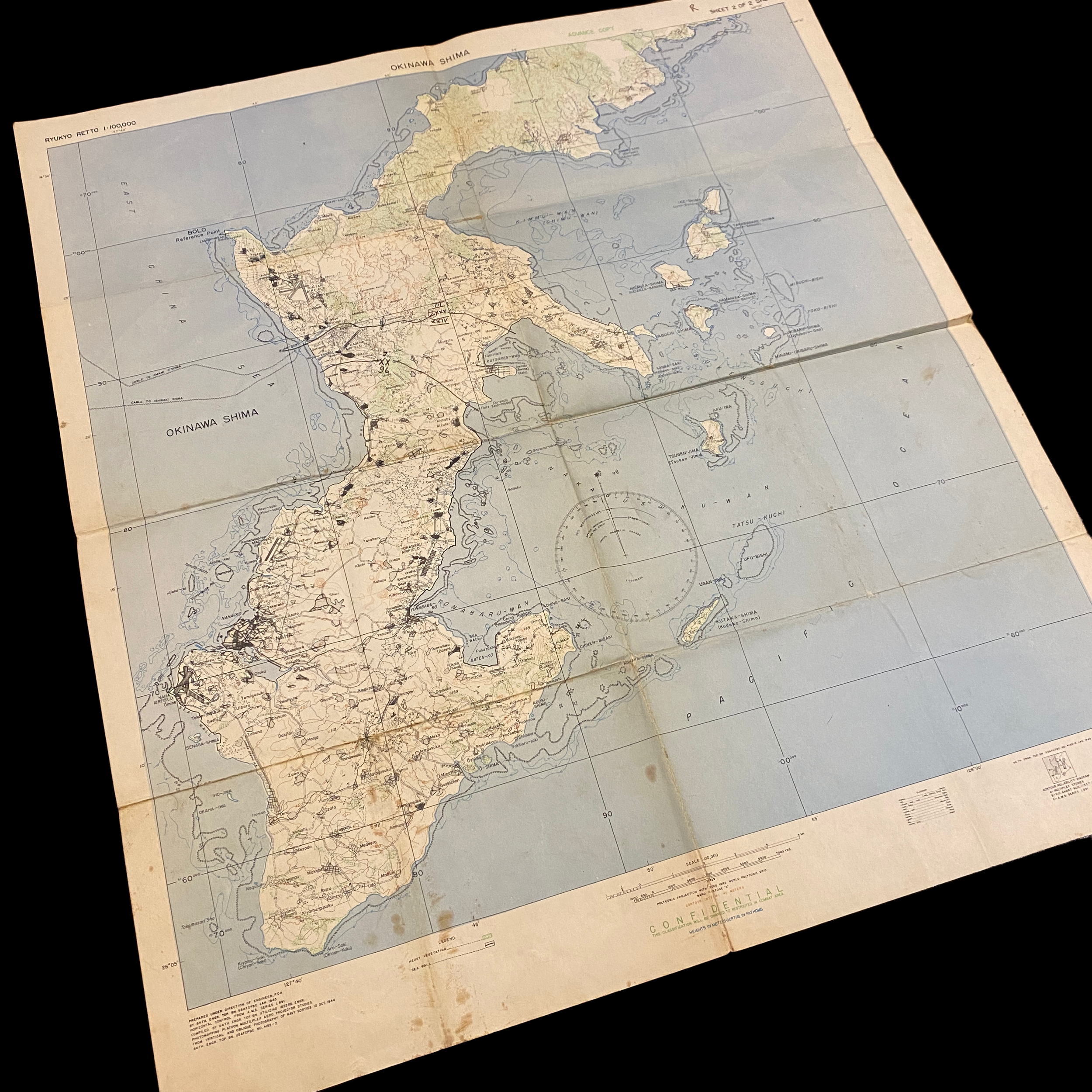
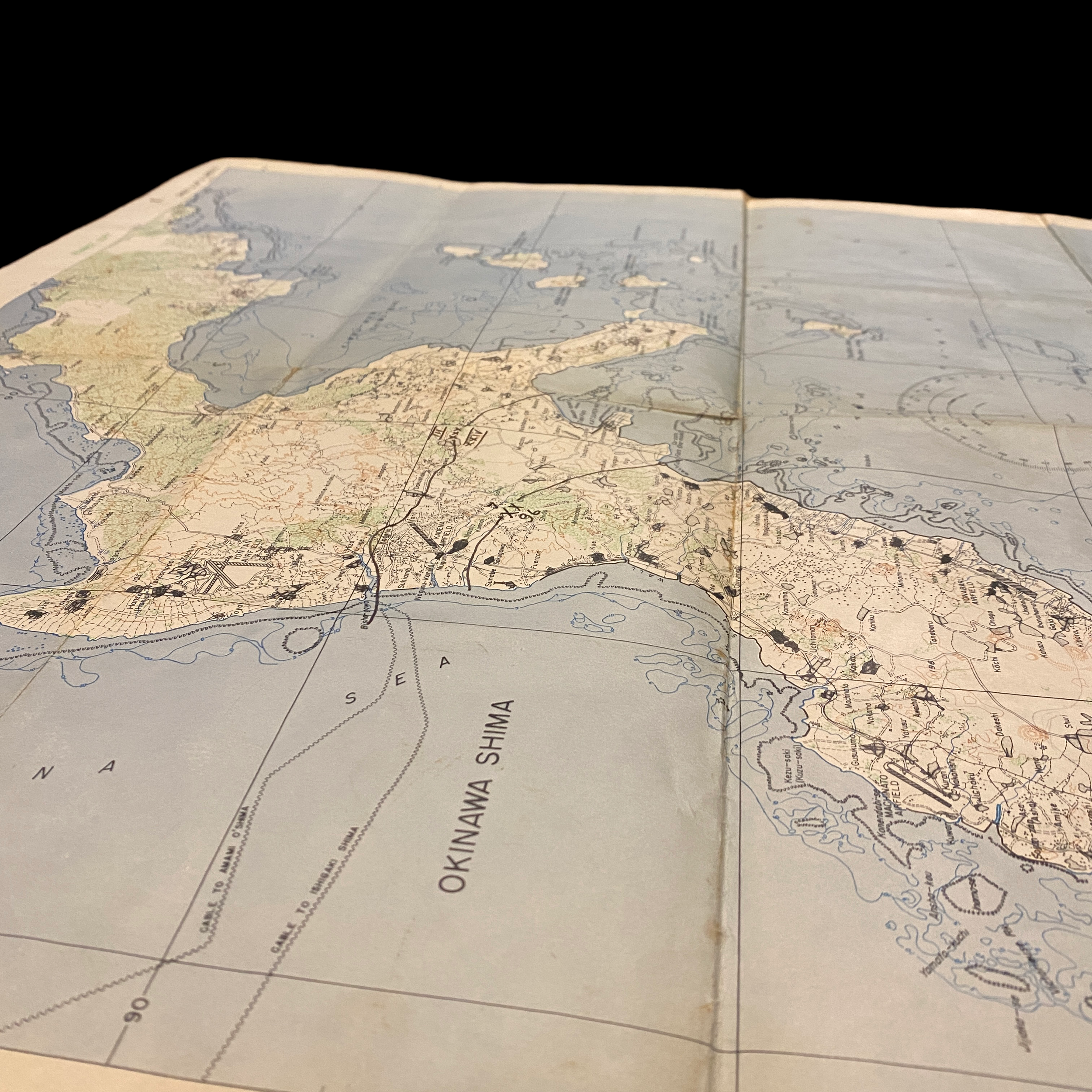


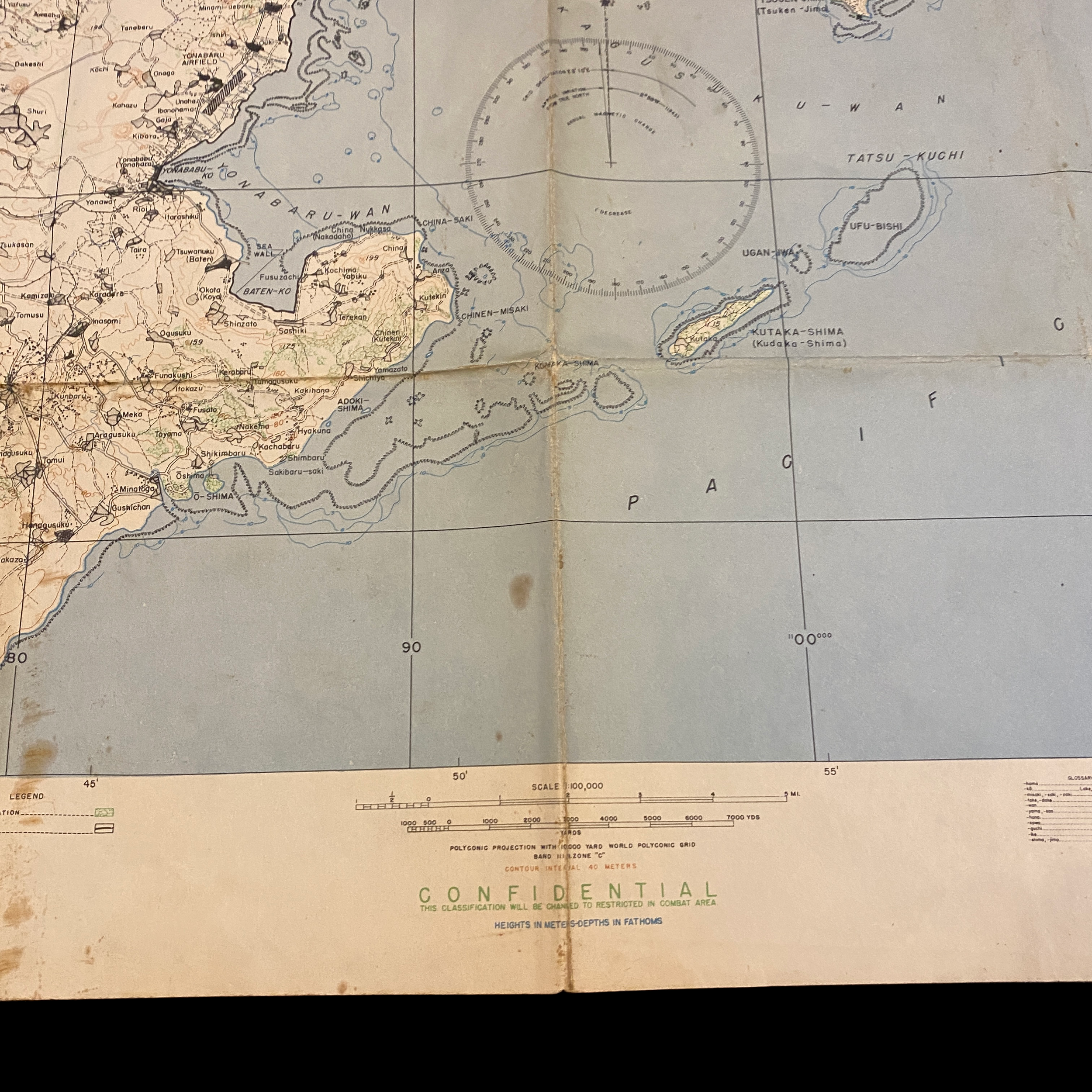
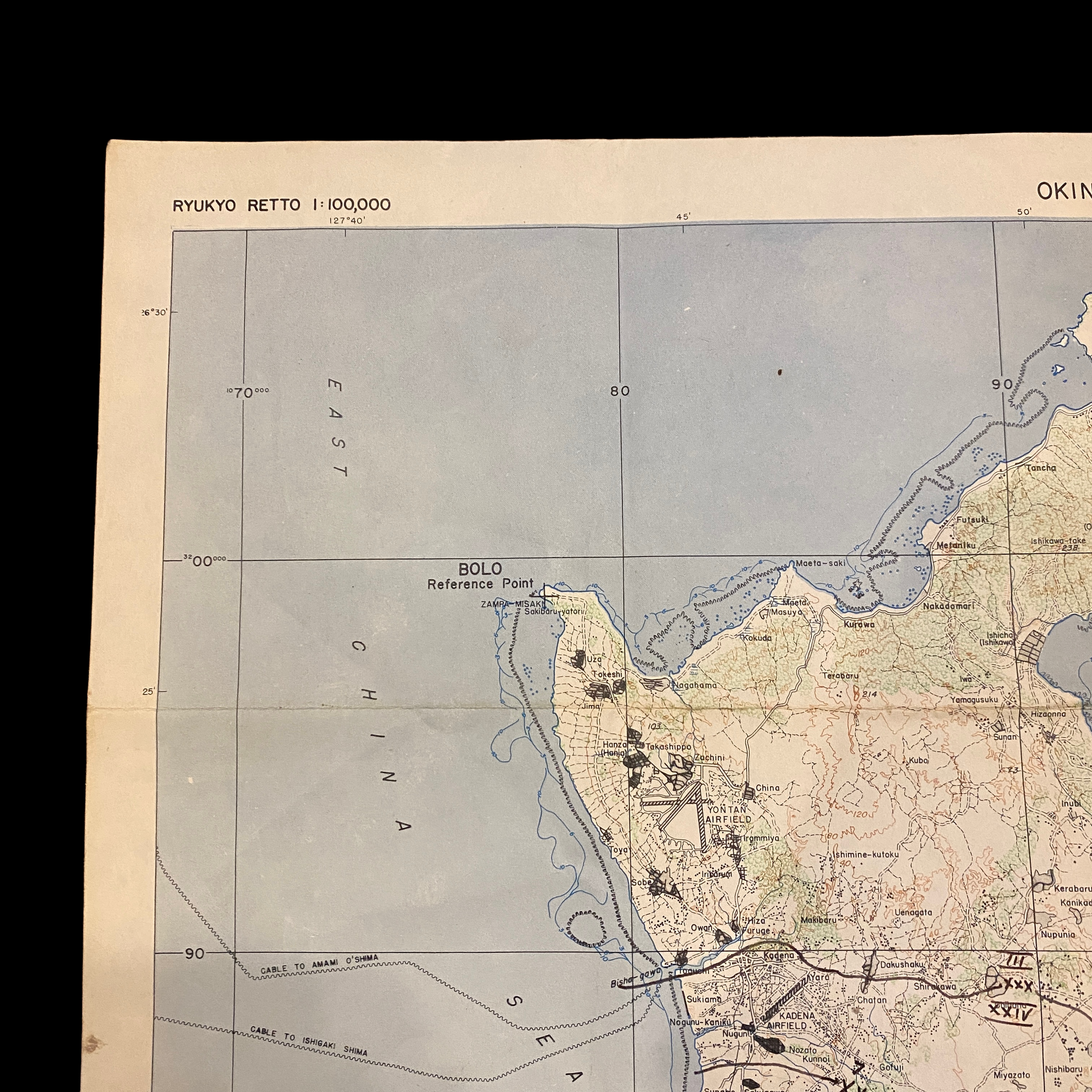
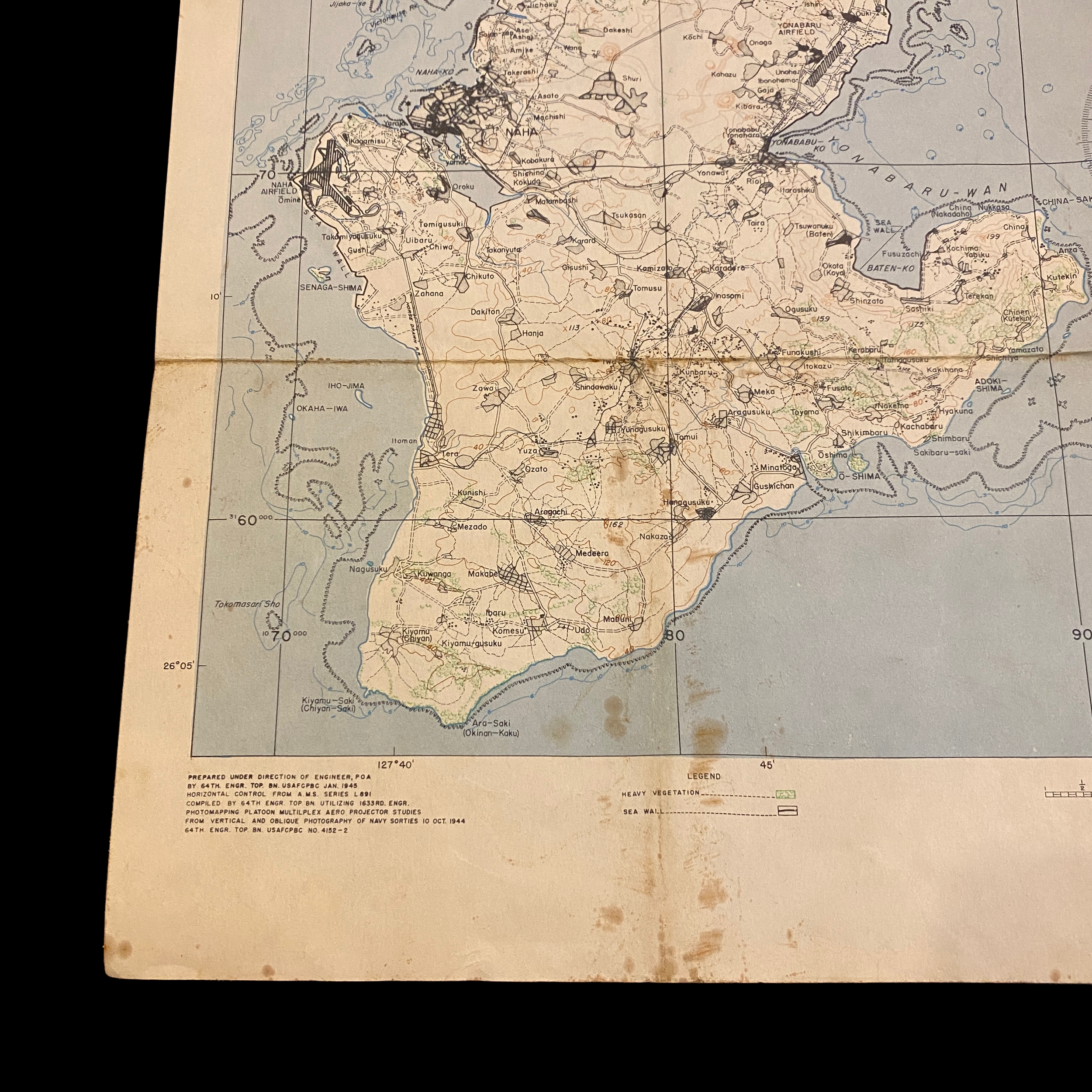
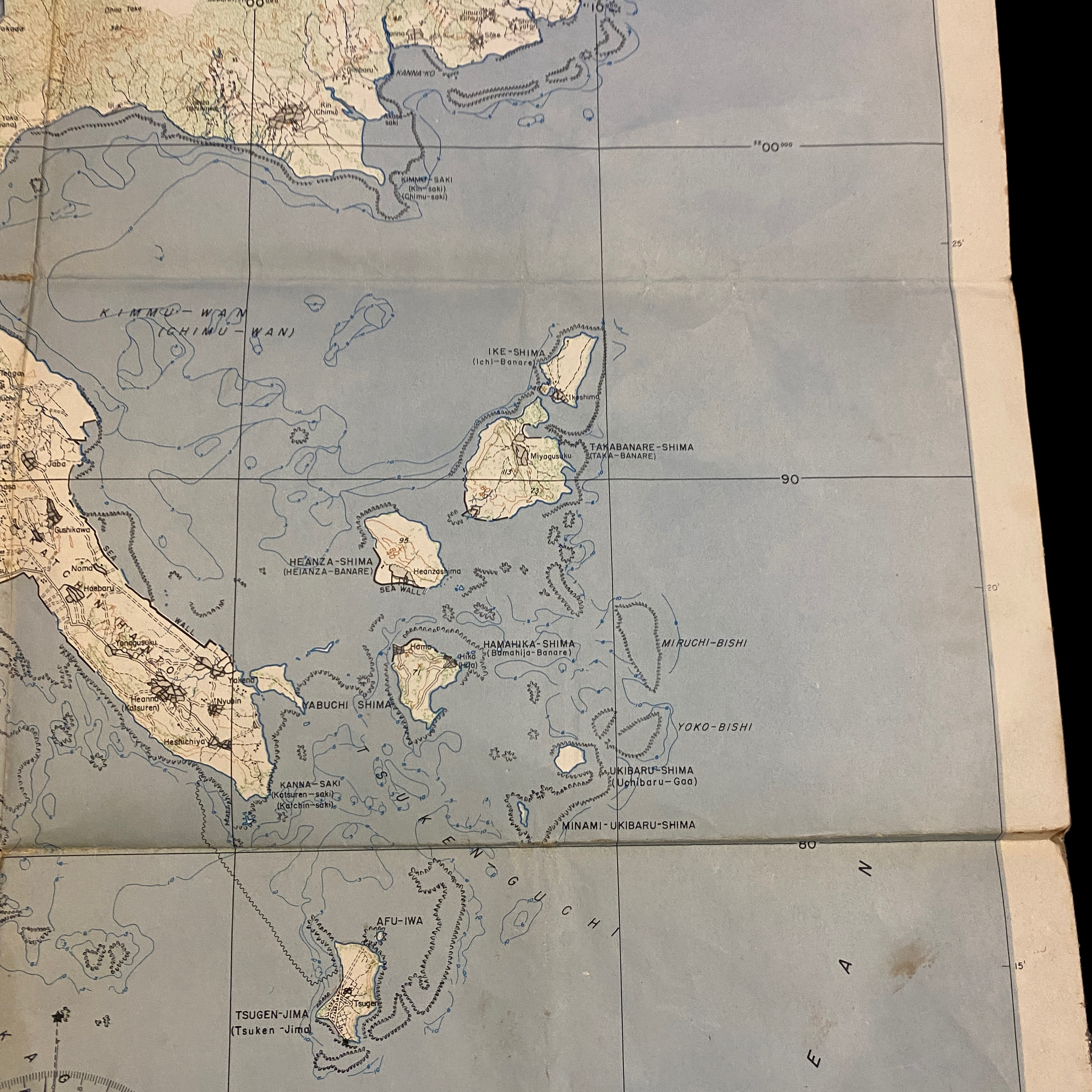
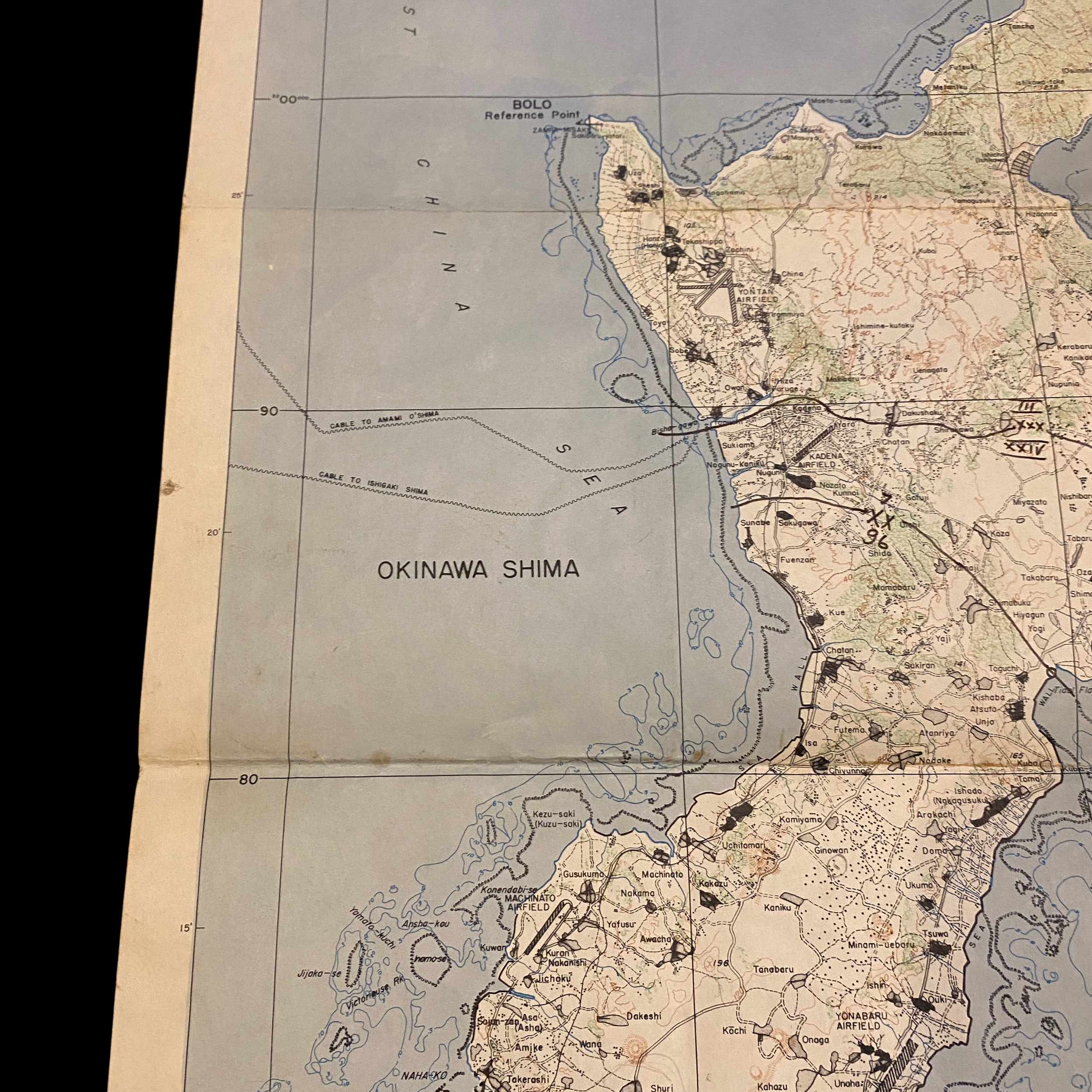
















RARE! 1945 WWII D-Day Operation Iceberg 10th Army Okinawa Kadena Airfield Soldier Marked Advancement Map - Marked CONFIDENTIAL
Comes with hand-signed C.O.A.
*Contains soldier-annotated battle front-line advancements of the 10th Army following their D-Day landings on Okinawa. This beach shows BEACH WHITE, BEACH PURPLE, BEACH ORANGE, BEACH YELLOW, BEACH BLUE, BEACH RED, AND BEACH GREEN.
This is a rare WWII U.S. combat operations map of Okinawa. Dated January 1945, this map is marked CONFIDENTIAL and shows the amphibious landing beaches of the invasion, including the Shuri Line. What makes this map truly special is that it has soldier-annotated advancement lines of the U.S. 10th Army following their D-Day landings near Kadena Airfield.
The U.S. 10th Army was a unit of the United States Army that played a crucial role in the Pacific Theater of World War II. As part of the larger Allied effort to defeat Japan, the 10th Army was responsible for conducting amphibious operations and engaging in ground combat against Japanese forces in the region.
One of the most significant operations carried out by the 10th Army was the invasion of Okinawa, which began on April 1, 1945. This operation, also known as "Operation Iceberg," was the largest amphibious assault in the Pacific Theater and involved over 180,000 Allied troops.
The 10th Army played a key role in the invasion of Okinawa, with elements of the unit participating in the initial amphibious landings on the island's shores. The unit's soldiers, along with those of other Allied units, faced fierce resistance from Japanese forces who were determined to defend their homeland.
Despite the challenges, the 10th Army and its allies were able to secure a foothold on the island and push inland. As they advanced, the soldiers of the 10th Army faced a number of challenges, including difficult terrain, fortified Japanese positions, and harsh weather conditions.
One of the key objectives of the 10th Army during the invasion of Okinawa was the capture of Kadena Airfield, a strategic airbase located near the island's center. After making initial landings near the airfield, the 10th Army's soldiers fought their way inland, engaging in intense combat with Japanese forces.
Ultimately, the 10th Army was able to secure Kadena Airfield and use it as a base of operations for further advances on the island. This allowed the unit to continue pushing inland and engaging in combat with Japanese forces, ultimately helping to secure the island for the Allies.
The invasion of Okinawa was a costly and challenging operation, but it was ultimately successful thanks in large part to the efforts of the U.S. 10th Army. The unit's soldiers faced overwhelming odds and made significant sacrifices in order to achieve victory, and their efforts helped pave the way for the eventual Allied victory in the Pacific Theater.
10th Army’s Assault on Okinawa:
The attack on Okinawa was a crucial operation during World War II, as it was the largest amphibious assault in the Pacific Theater and marked the final step in the Allies' campaign to defeat Japan. The operation, which began on April 1, 1945, involved over 180,000 Allied troops, including soldiers from the United States Army.
The attack on Okinawa was a difficult and costly operation, as Japanese forces were determined to defend their homeland and put up a fierce resistance. The terrain on the island was challenging, with rugged hills and heavily fortified positions, and the weather was often harsh, with heavy rain and strong winds.
Despite these challenges, the soldiers of the U.S. Army were able to secure a foothold on the island and begin pushing inland. They faced intense combat with Japanese forces, who were well-entrenched and prepared to fight to the death.
One of the key objectives of the U.S. Army during the attack on Okinawa was the capture of Kadena Airfield, a strategic airbase located near the island's center. After making initial landings near the airfield, the Army's soldiers fought their way inland, engaging in intense combat with Japanese forces.
Ultimately, the U.S. Army was able to secure Kadena Airfield and use it as a base of operations for further advances on the island. This allowed the unit to continue pushing inland and engaging in combat with Japanese forces, ultimately helping to secure the island for the Allies.
The attack on Okinawa was a difficult and costly operation, but it was ultimately successful thanks in large part to the efforts of the U.S. Army. The unit's soldiers faced overwhelming odds and made significant sacrifices in order to achieve victory, and their efforts helped pave the way for the eventual Allied victory in the Pacific Theater.
This is a rare opportunity to own a piece of history and a valuable collectible. Don't miss out on the chance to add this unique map to your collection.